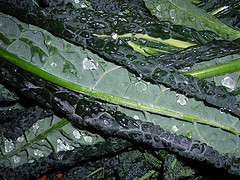Our chums at the International Rice Research Institute have been busy, with no fewer than three press releases in two days.
First up, US$11 million over three years from the Bill and Melinda Gates Foundation to re-engineer rice’s photosynthetic pathway. For the record, there are two different pathways, known as C3 and C4. ((Read all about it in Eating the Sun.)) Rice is C3. C4 is more efficient. So, hey, let’s make rice C4. The release says that as a result of this grant “rice plants that can produce 50% more grain using less fertilizer and less water are a step closer to reality”. But it doesn’t say how many more steps there might be. And if C4 rice is such a good idea, you might wonder why Nature, consumate tinkerer that she is, hasn’t already made it. ((see Denison, Kiers and West for some clues.))
Then there’s another US$30 million over three years (from Bill and Melinda and USAID) to create The Cereal Systems Initiative for South Asia (CSISA).
Major objectives of CSISA include better crop management and postharvest technologies and practices; the development and dissemination of improved rice, wheat and maize varieties; and the creation of a new generation of agricultural scientists and professional agronomists. The initiative will focus initially on eight hubs in Bangladesh, India, Pakistan, and Nepal, which represent key intensive cereal production systems that play a major role in feeding close to a quarter of the world’s population. …
CSISA’s 10-year goal is for four million farmers to achieve a yield increase of at least 0.5 tons per hectare on five million hectares, and an additional two million farmers to achieve a yield increase of at least 1.0 ton per hectare on 2.5 million hectares.
That deserves to be a success, and I don’t think it depends on C4 rice.
And finally, to implement those two programmes, and STRASA (Stress-tolerant rice for poor farmers in Africa and South Asia), another one supported by the Bill and Melinda Gates Foundation, IRRI signed a new three-year agreement with the Indian Council of Agricultural Research (ICAR).
Go IRRI!
 Vigilant as ever,
Vigilant as ever,